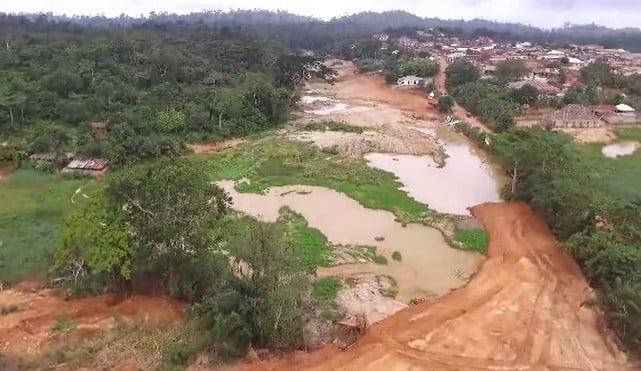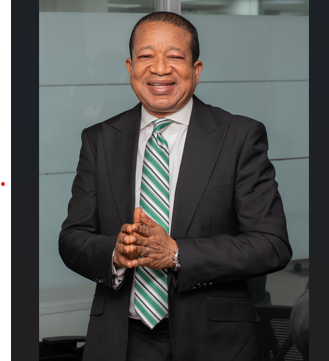The once-peaceful community of Asante Akyem Benimase, nestled in the Asante Akyem Central Municipal of Ghana’s Ashanti Region, has become a stark illustration of the devastating consequences of unchecked illegal mining. A pervasive atmosphere of disregard for the law and environmental well-being hangs heavy over the area, with the relentless pursuit of gold transforming the landscape into a scarred and hazardous wasteland. The community’s very infrastructure, including its main road, has been overtaken by gaping mining pits, excavators, and other equipment, a testament to the brazen nature of these illicit operations. This illegal activity, locally known as “galamsey,” flourishes openly, raising serious questions about the complicity of local authorities who seem to turn a blind eye to the blatant violations of Ghana’s mining laws.
The flagrant disregard for Ghana’s Minerals and Mining Act, 2006 (Act 703), which strictly prohibits mining activities within settlements and within a 50-meter radius of public roads, underscores the severity of the situation. The Act, designed to protect communities and their environment from the destructive impacts of mining, is being openly flouted in Asante Akyem Benimase. The once-vital thoroughfare, essential for transportation and commerce, is now a treacherous path, riddled with hazardous excavations and makeshift processing sites. This blatant disregard for the law not only jeopardizes the safety and well-being of residents but also highlights a systemic failure of governance and regulatory oversight. The community’s transformation into a sprawling, unregulated mining site demonstrates the alarming extent to which illegal operations have gripped the area.
The miners themselves, when confronted, exhibit a defiant and unapologetic stance, emphasizing the economic desperation that fuels their involvement in galamsey. Their assertions that mining is their sole means of survival offer a glimpse into the complex socio-economic factors driving illegal mining in the region. Claims like “Mind your own business. Has anyone stopped you from working? Why should we stop? This is what we do, and we have nothing to do with the government,” reveal a deep-seated sense of marginalization and a disconnect from the government’s authority. While this perspective doesn’t justify the illegal and destructive nature of their activities, it highlights the need for sustainable economic alternatives and effective community engagement to address the root causes of galamsey.
The residents of Asante Akyem Benimase, bearing the brunt of this environmental degradation, express profound distress and frustration over the irreversible damage being inflicted upon their community. The destruction of all river bodies in the area stands as a stark testament to the devastating environmental consequences of galamsey. The close proximity of mining pits to residential areas further amplifies their anxieties, creating a constant threat of land subsidence and other hazards. Testimonies such as “from your house even if you throw water, it goes straight into the mining pit” paint a vivid picture of the precarious living conditions and the imminent danger faced by the community. The destruction of their water sources and the constant threat to their homes leave residents feeling vulnerable and powerless.
Adding to the community’s woes are accusations directed at Nana Akwasi Fosu Gyeabour, the Chief of Asante Akyem Benimase, alleging his complicity in the illegal mining operations, particularly with Chinese miners. The residents’ suspicion is fueled by seemingly conciliatory gestures, such as the construction of a community center, which they interpret as an attempt to appease them and divert attention from the ongoing environmental destruction. This perceived collusion between local leadership and foreign actors further erodes trust and intensifies the community’s sense of betrayal. The residents’ plea for intervention from the Asantehene, a highly respected traditional leader, highlights the gravity of the situation and their desperation for a resolution.
The situation in Asante Akyem Benimase serves as a microcosm of the broader challenges posed by illegal mining in Ghana. The community’s experience underscores the urgent need for robust law enforcement, effective environmental regulations, and comprehensive community engagement to combat galamsey effectively. The residents’ warning that they will take matters into their own hands if the authorities fail to act reflects the growing frustration and desperation within affected communities. The escalating environmental damage, the disregard for the law, and the alleged complicity of local leaders demand immediate and decisive action to address the root causes of illegal mining and protect the environment and livelihoods of communities like Asante Akyem Benimase.














